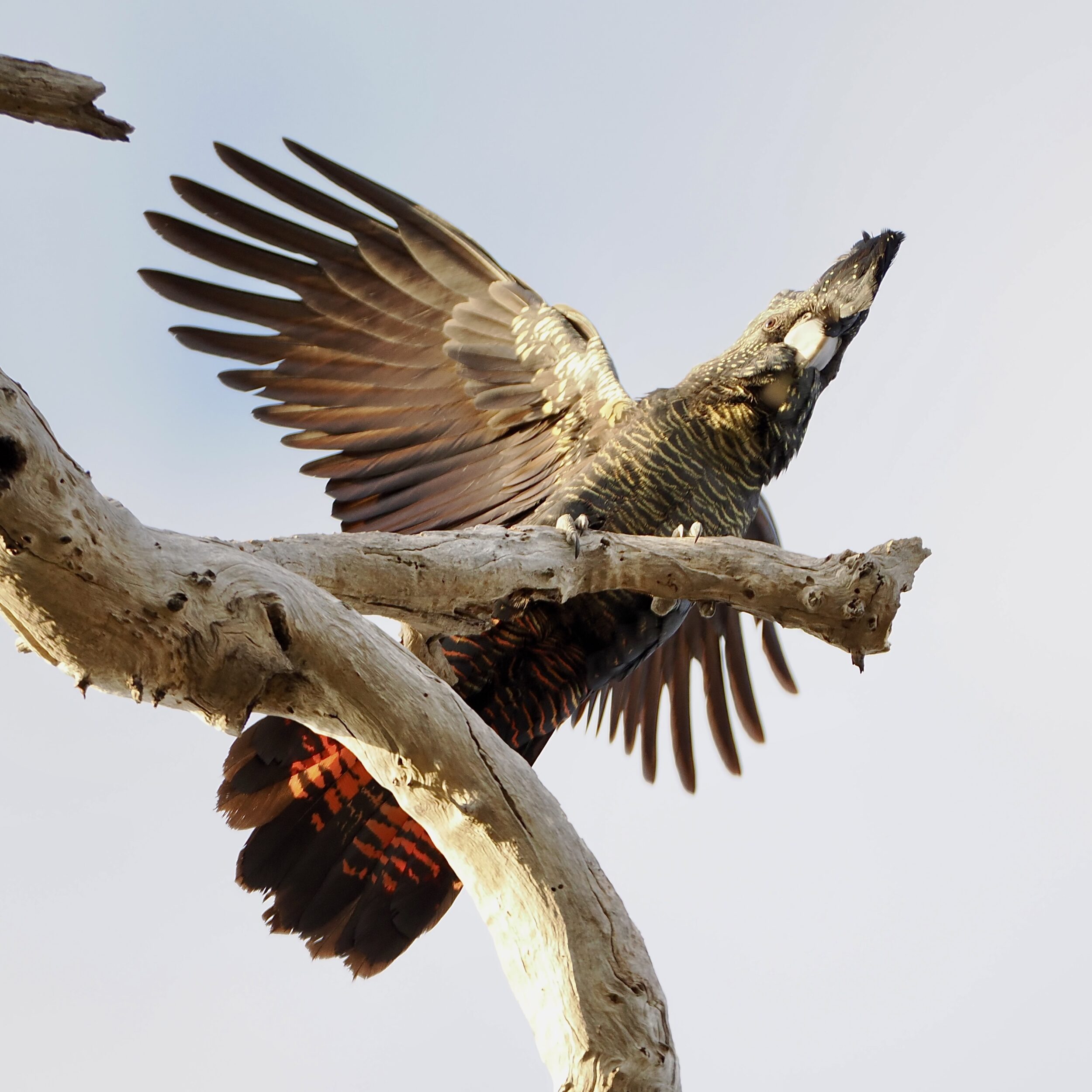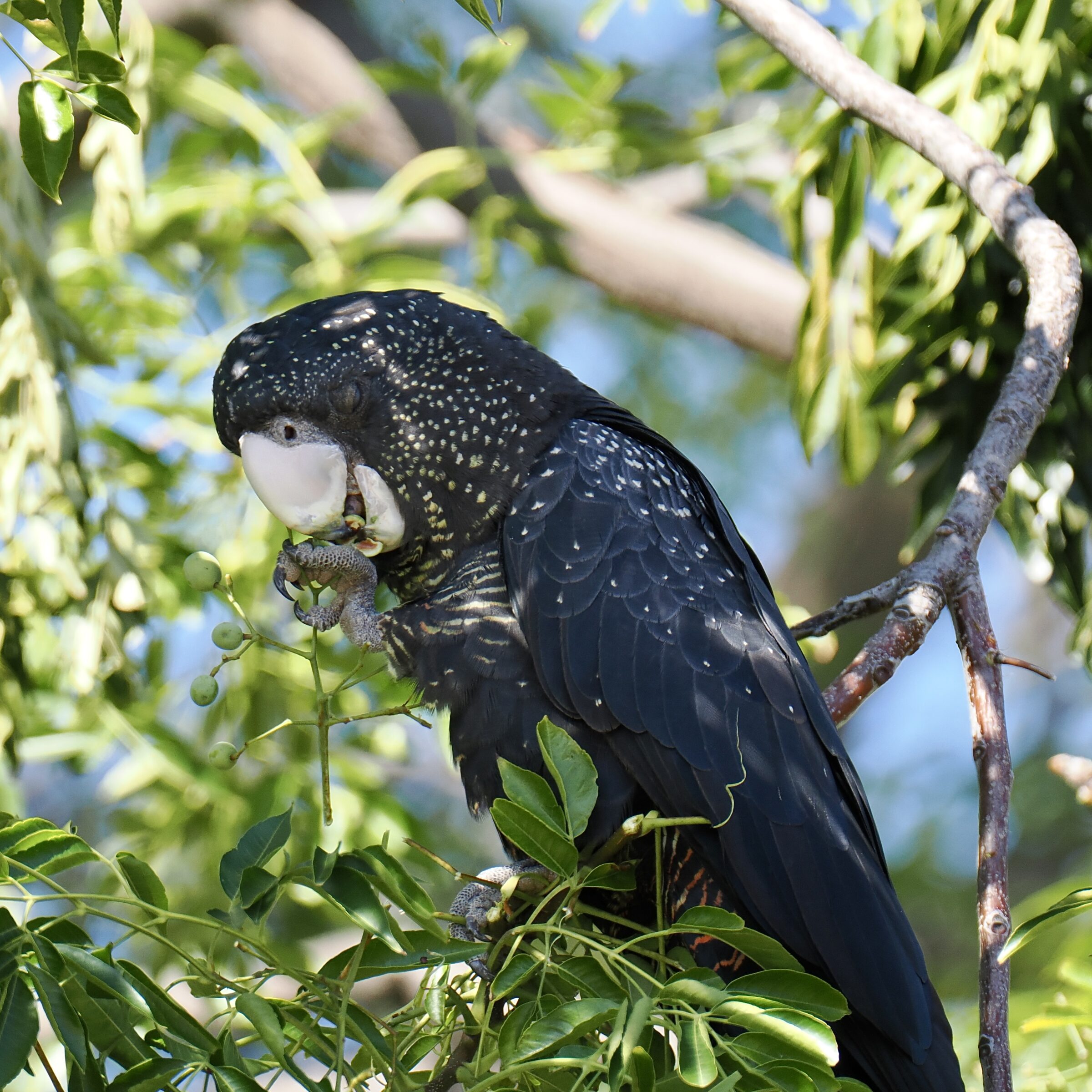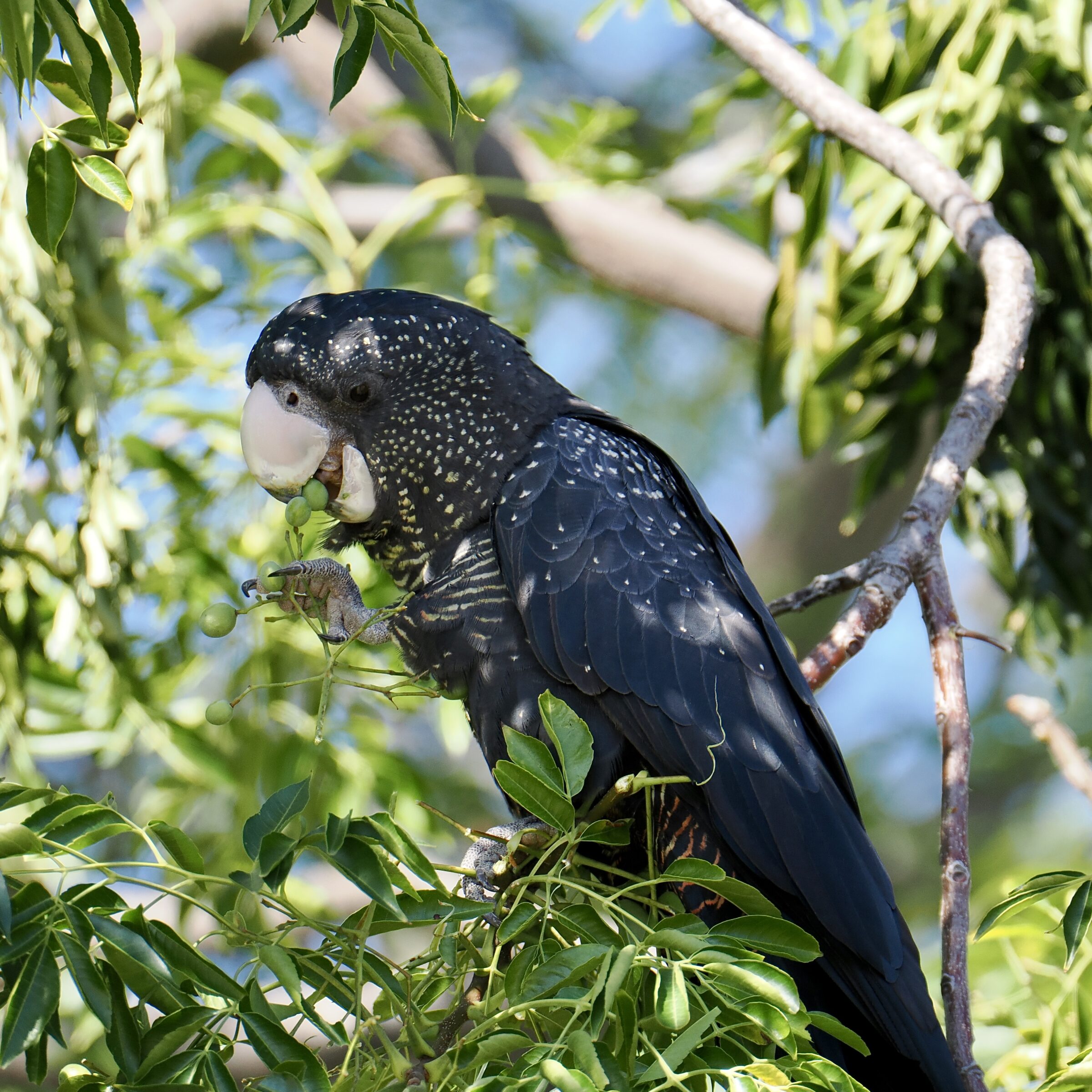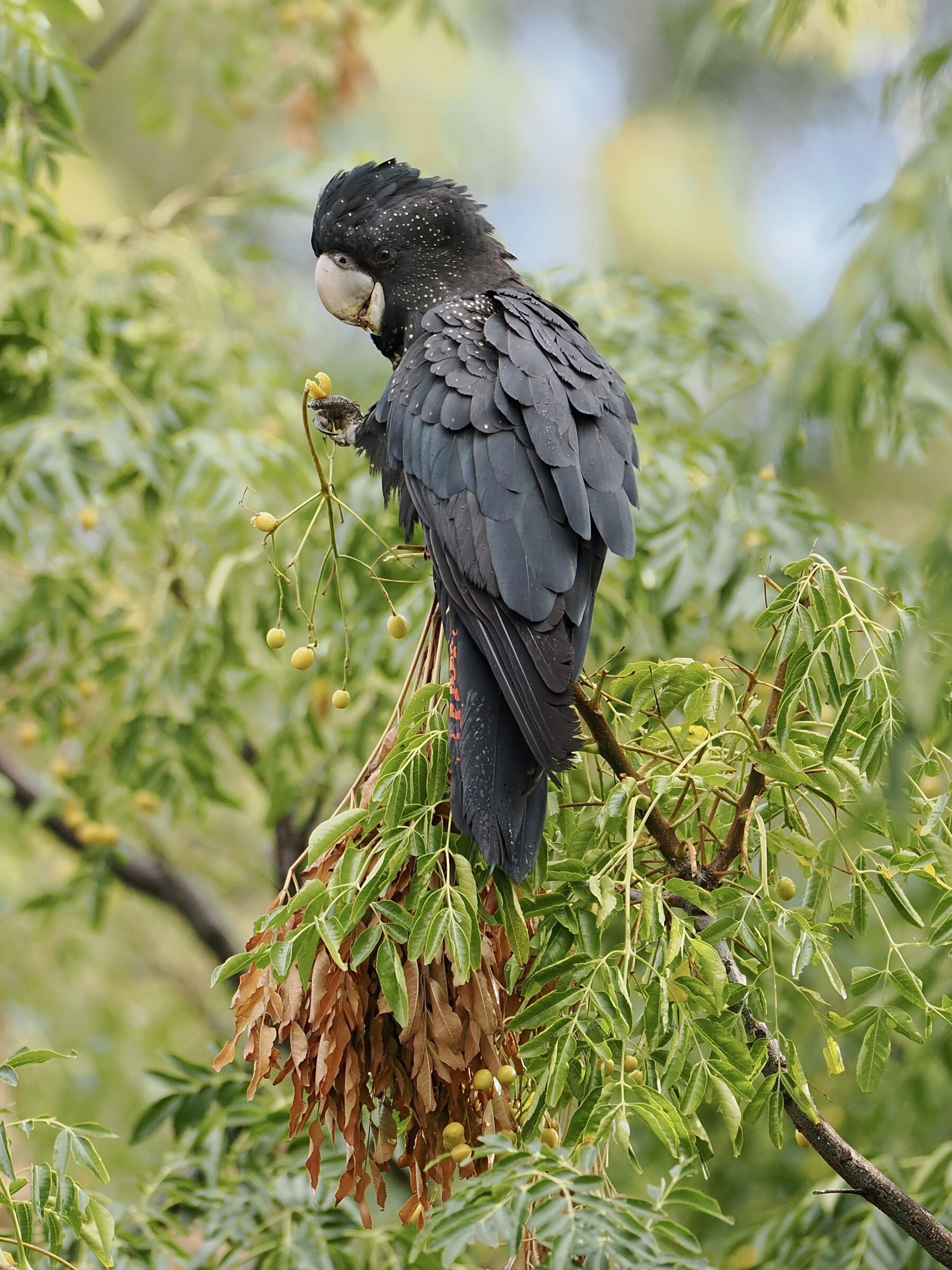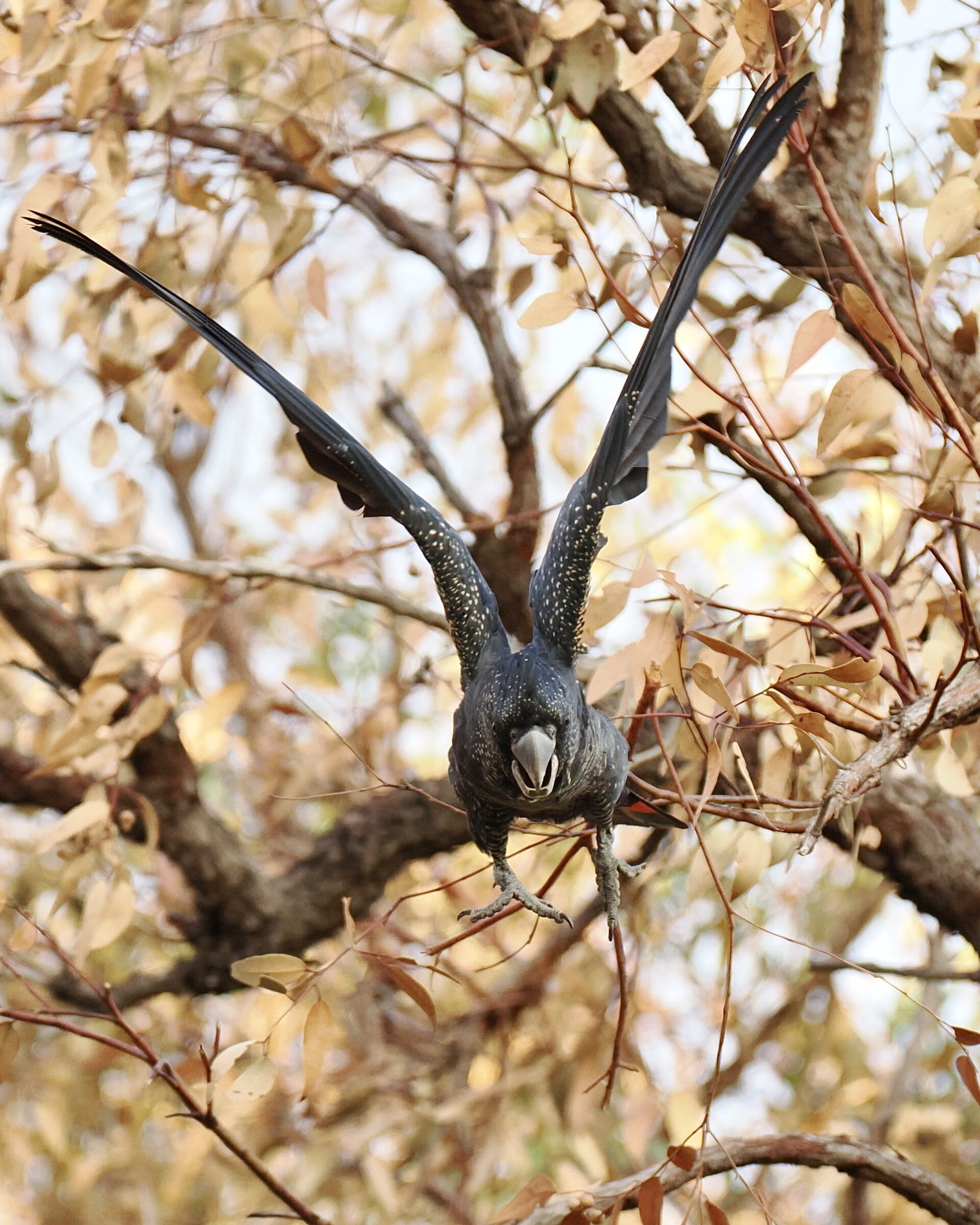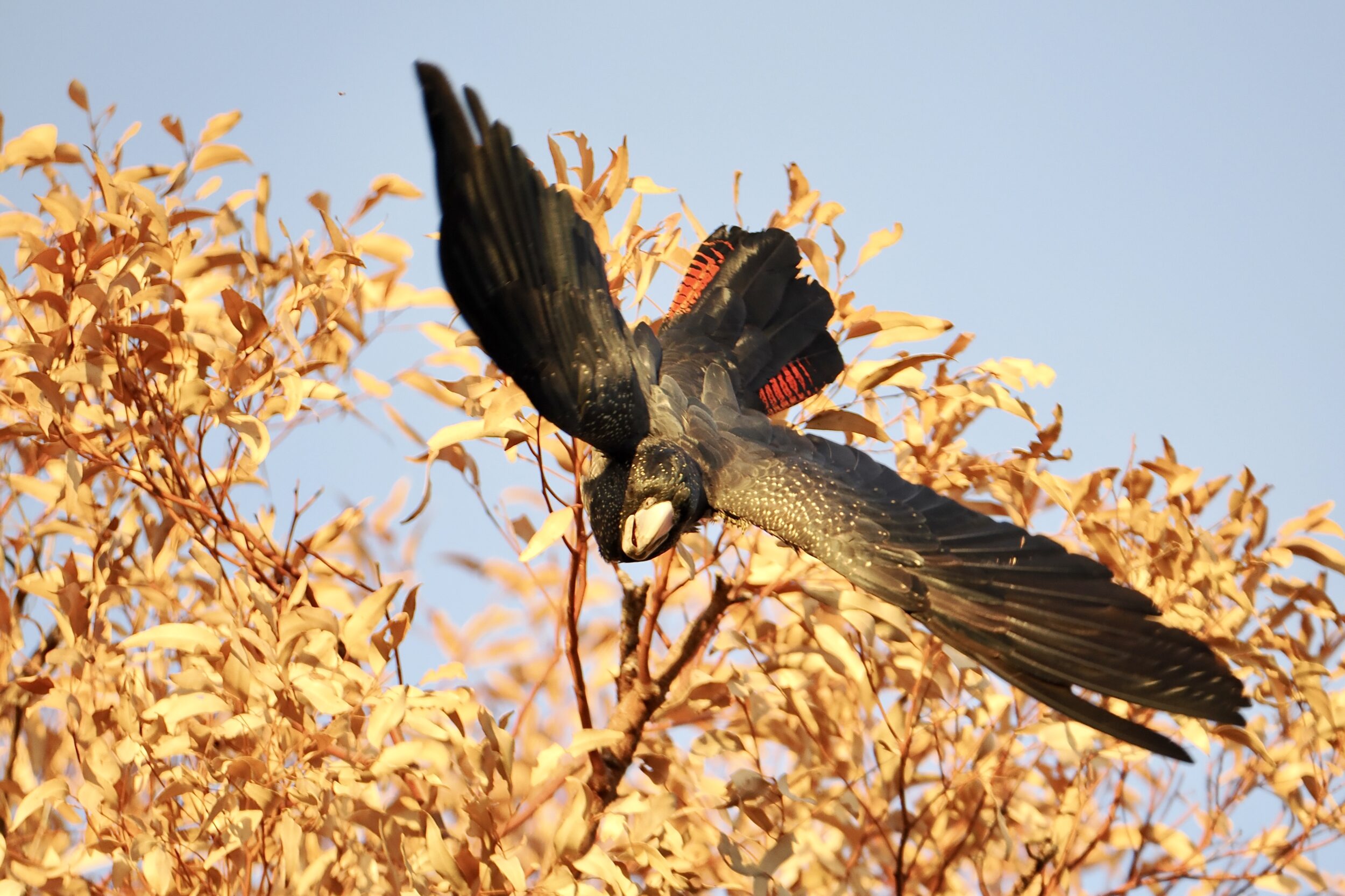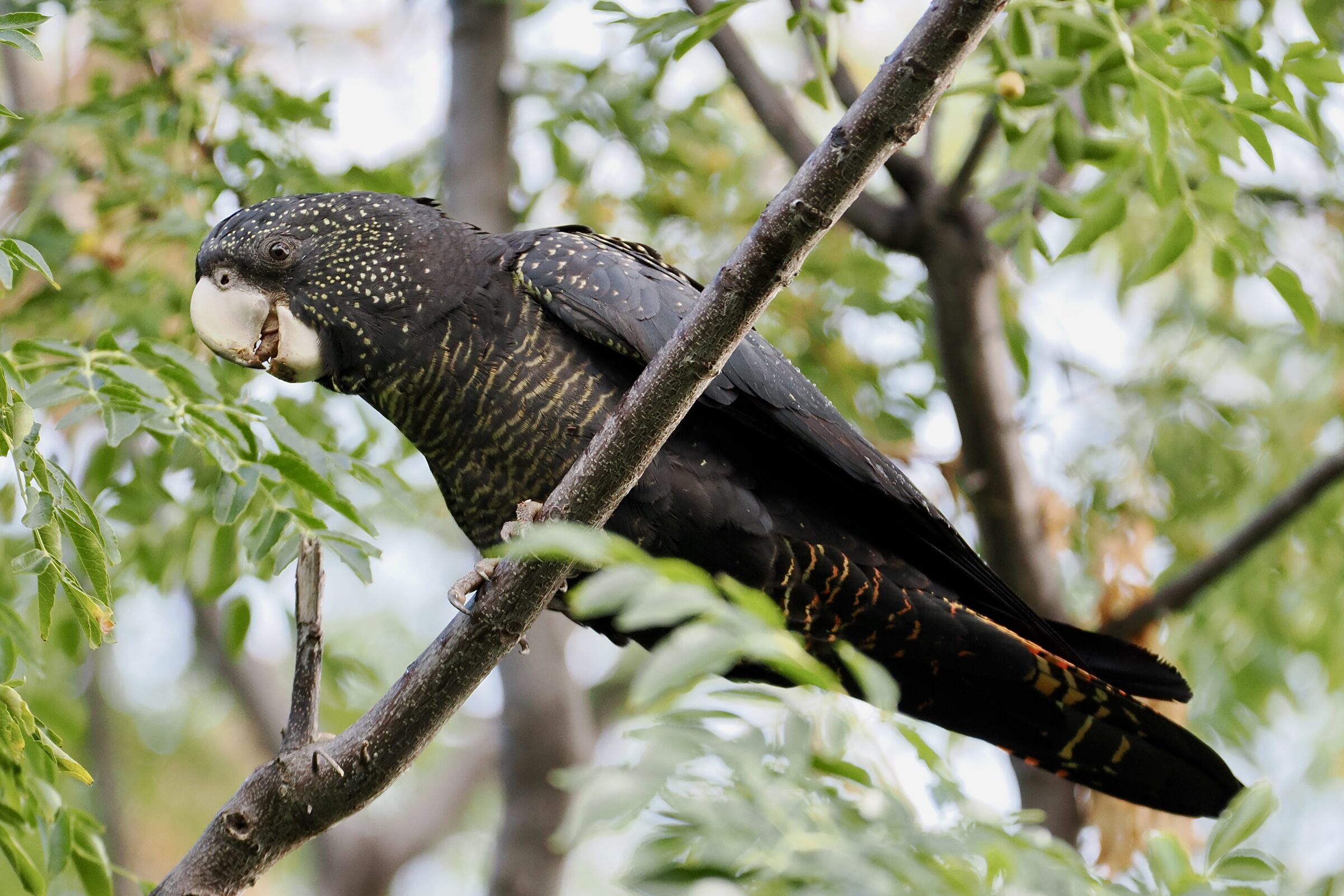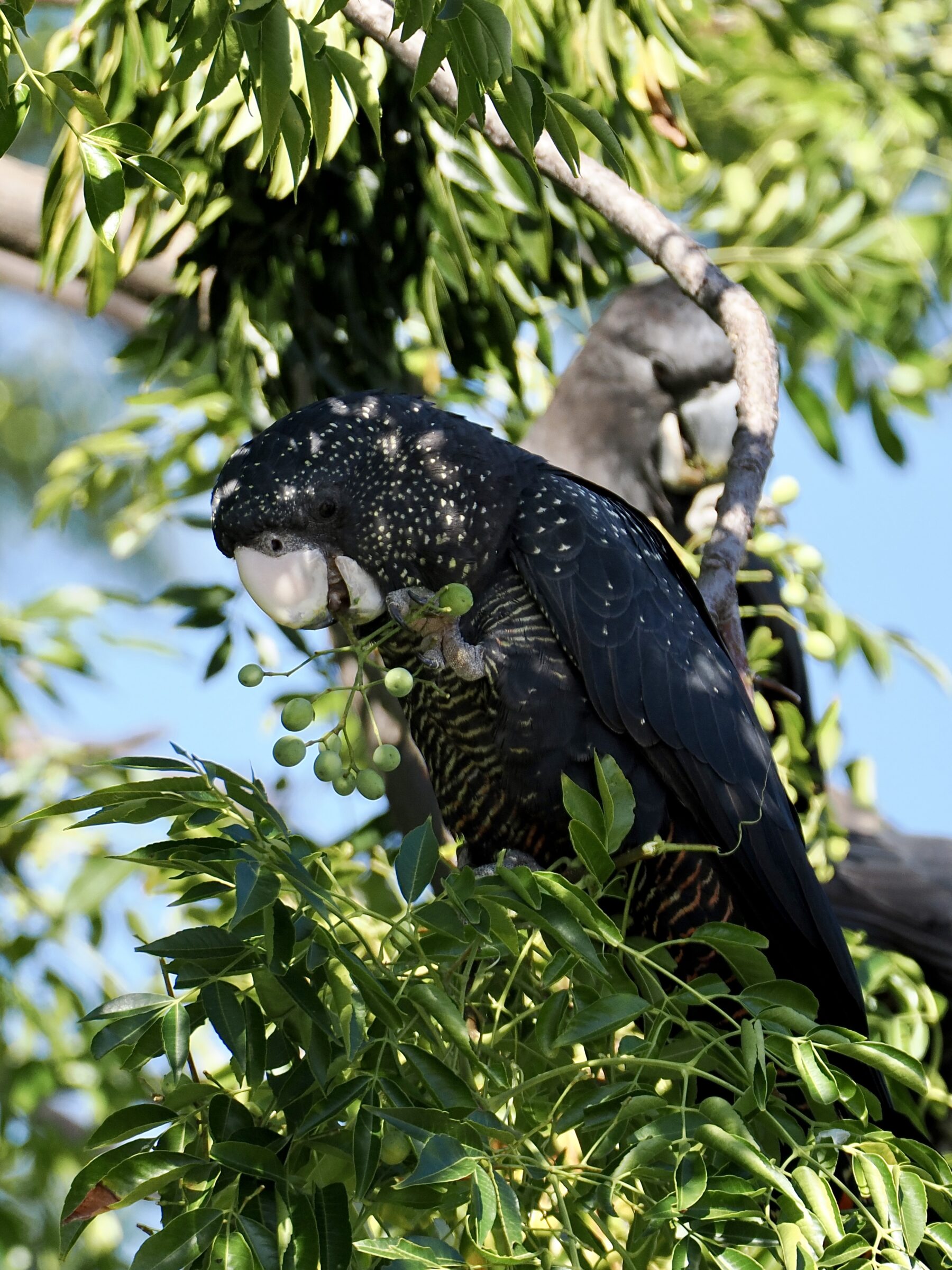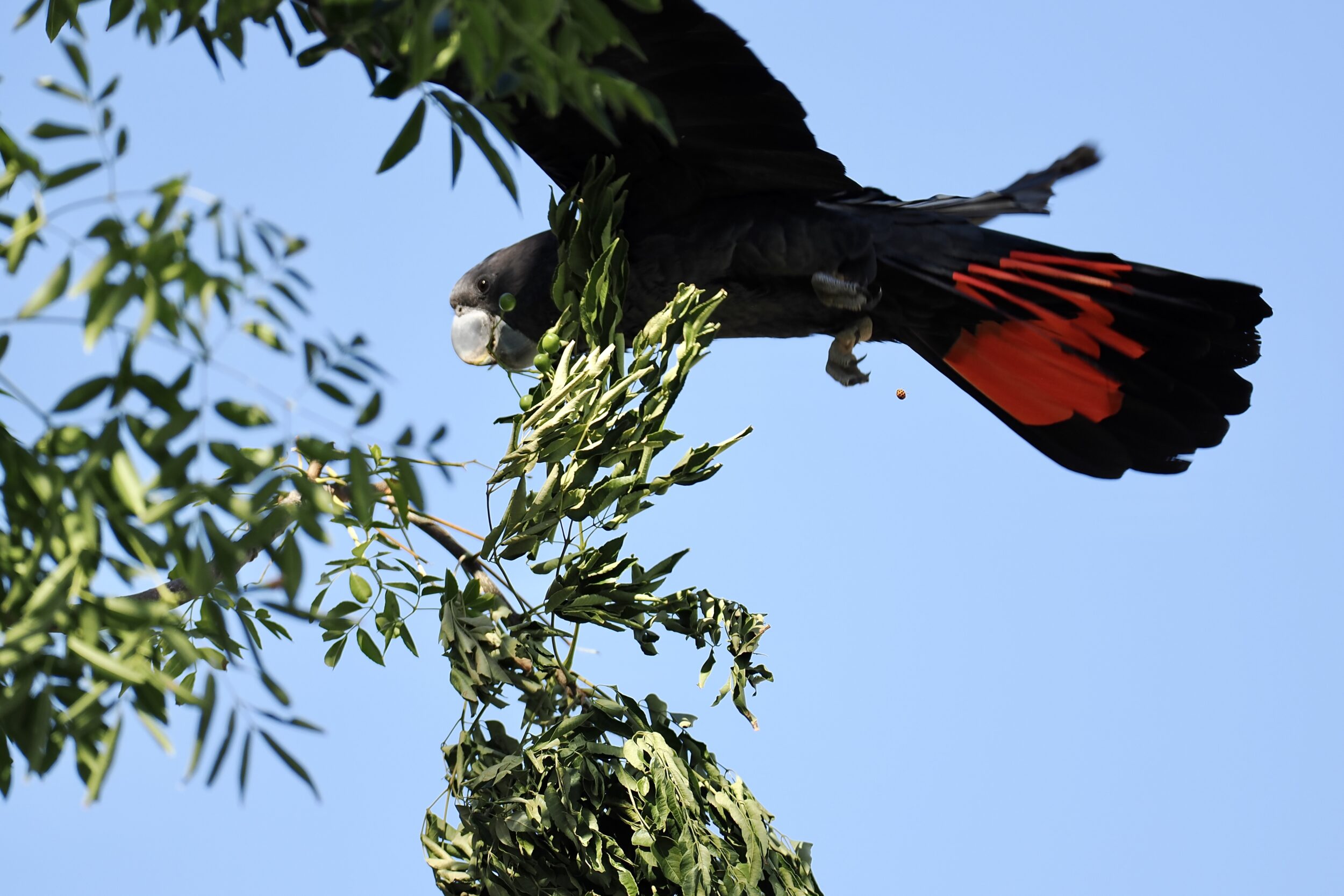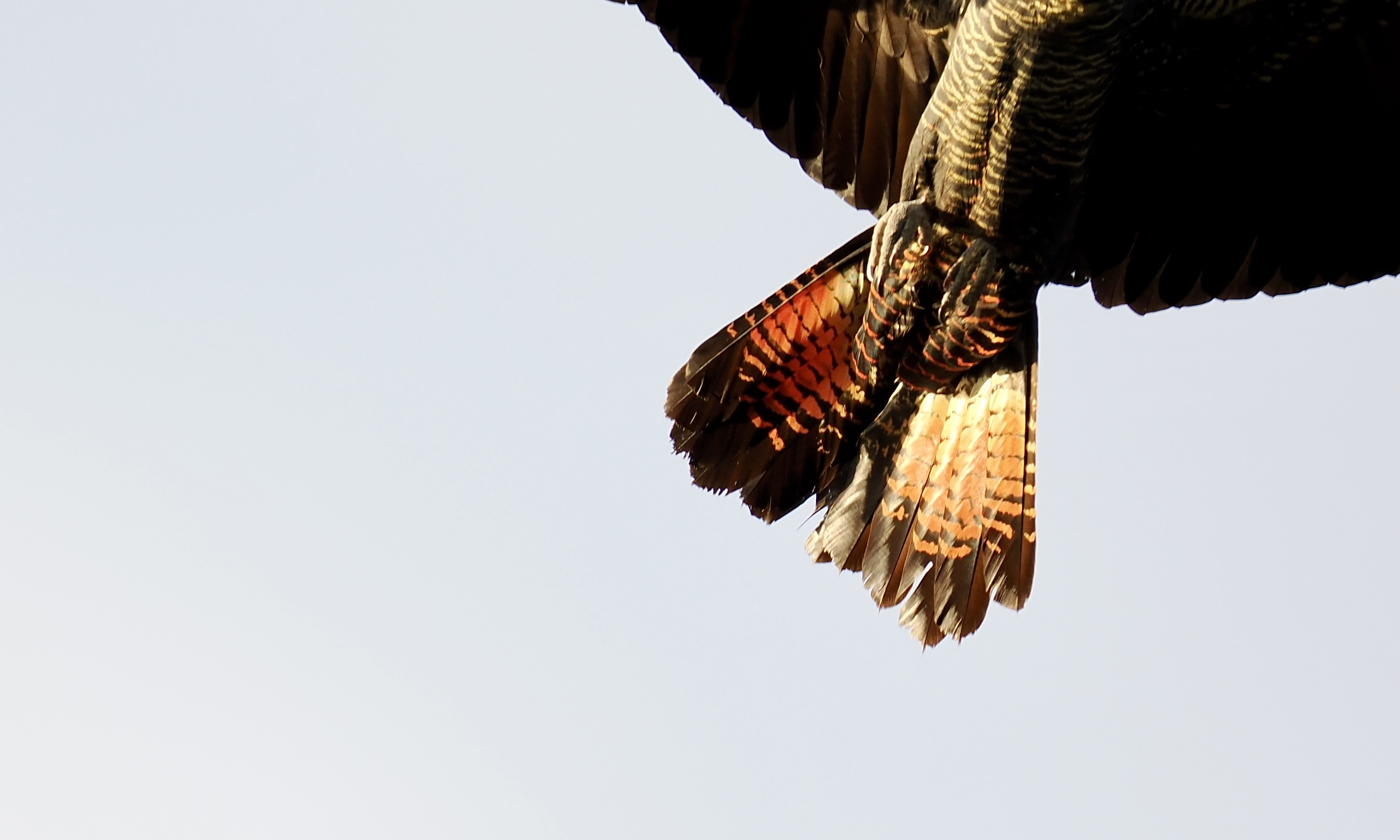If you only ever saw black cockatoos in flight, or eating, you could be unaware that their head feathers are “convertible”.
Thus engaged, the tops of their heads are smooth – an uninterrupted continuation from the back of the birds’ backs.
However, once a black cockatoo has a good look around, or is “socialising” whilst his or her feet are locked onto something solid….voila!
Suddenly, you are looking at a crested bird.
Comments closed